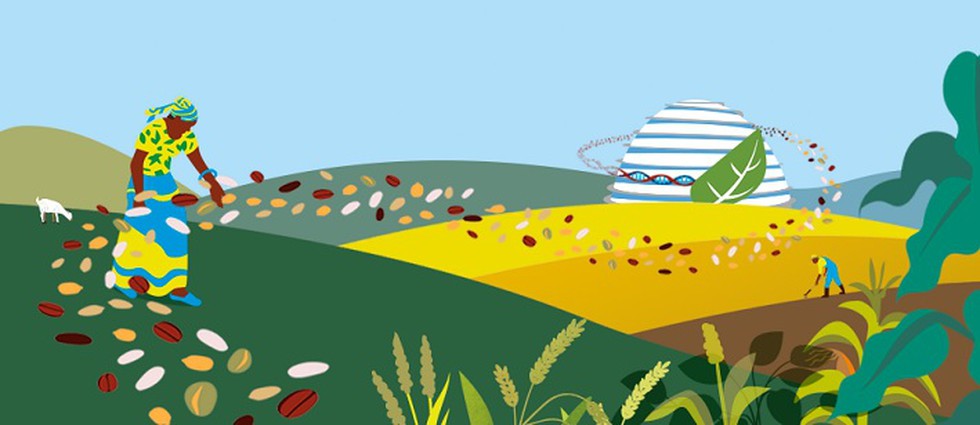Over the past 10,000 years, agriculture has withstood moderate climatic changes due to the diversity in species, varieties, and cultivation techniques. The early farmers chose to cultivate plants that produced big, edible seeds, even without knowledge of genetics. These cultivated plants developed unique varieties as they dispersed over the globe. The enormous range of foods we enjoy is also a result of genetic variation within crops.

HOW NATIONS ARE COMING TOGETHER FOR CONSERVATION AND SUSTAINABLE USE OF PLANT GENETIC RESOURCES
The goals of preservation and open exchange of crop diversity are in the interests of all nations. According to a resolution made by the FAO Conference’s Twenty-second Session, the Commission on Plant Genetic Resources for Food and Agriculture was founded in 1983. The International Undertaking on Plant Genetic Resources for Food and Agriculture, a non-binding agreement designed to encourage harmony in managing plant genetic resources globally, was endorsed by the same resolution.
The International Treaty on Plant Genetic Resources for Food and Agriculture (ITPGRFA), also known as International Seed Treaty, or Plant Treaty, was drafted in Madrid in 2001 and went into effect on June 29, 2004. The Treaty mandates that plant genetic resources for food and agriculture must be conserved and used sustainably. The second goal is the equal and fair distribution of gains from using these resources. It also creates a multilateral structure to make access to all crops easier.
A GLOBAL POOL OF GENETIC RESOURCES FOR SHARED ACCESS AND BENEFITS
The Multilateral System, the Treaty’s novel approach to access and benefit sharing, incorporates 64 of our most significant crops into a readily available global pool of genetic resources for potential users in the Treaty’s ratifying nations. These 64 crops represent 80% of the food we obtain from plants.
The Treaty aims to: recognize the significant role that farmers play in the diversity of crops that feed the world; create a global system to give farmers, plant breeders, and scientists access to plant genetic materials; and make sure that recipients share any benefits they derive from using these genetic materials with the countries from which they were originally sourced.
TRADITIONAL CROPS ARE A CRITICAL COMPONENT OF SUSTAINABLE FOOD PRODUCTION
The Plant Treaty encourages the creation and upkeep of different farming systems and helps to maximize the usage and breeding of all crops. Thousands of indigenous crops have been dormant or unused for many years. Traditional crops can contribute to the development of sustainable food production systems and halt the spread of some pest and disease infestations.
For small-scale or family farmers, several traditional crops may have high economic potential and make excellent revenue crops. For instance, quinoa was a subsistence crop in Bolivia, Peru, and Ecuador until it gained attention, and production nearly tripled between 1992 and 2010.
SAFEGUARDING INDIGENOUS KNOWLEDGE OF FARMERS HELPS BIODIVERSITY CONSERVATION
Indigenous people around the world play a significant role in protecting agricultural biodiversity. For example, Alder (Alnus nepalensis) has been grown by Khonoma farmers in Nagaland’s “jhum” (shifting cultivation) fields for millennia. It is a nitrogen-fixing tree with various uses for farmers since it keeps the soil fertile. In addition to being used as wood, its leaves are used as fertilizer and fodder.
The Plant Treaty acknowledges the significant contribution farmers have made to the continued advancement of the abundance of plant genetic resources available worldwide. It urges safeguarding the farmers’ traditional knowledge, enhancing their involvement in national decision-making processes, and ensuring they receive a portion of the benefits from utilizing these resources.
CONCLUSION
Plant genetic resources are crucial because they enable us to adapt crops to fit our needs and solve the difficulties of local, regional, and global food needs. Crop types that are adapted to local ecological conditions can lower the risks associated with climate change. However, there is an urgent demand for adapted germplasm (collection of genes with desirable traits) that necessitates characterization, evaluation, and the availability of resources. The collaboration frameworks provided by the plant treaty can ensure appropriate protection and responsible utilization of crop genetic variety to achieve the goals of human nutrition and food security.
